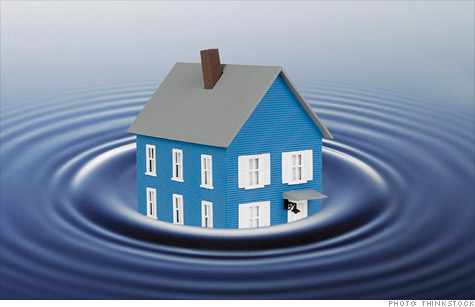
5 steps to save on homeowners insurance premiums and avoid grief in the event of a disaster.
(MONEY magazine) -- Reviewing your homeowners policy may not rank high on our annual home-maintenance checklist. Yet following the five steps below will save you big bucks now and a lot of grief down the road.
After the recent slew of natural disasters, average annual premiums are expected to surpass $1,000, with some owners likely to see double-digit rate hikes.
Step 1. Measure how much coverage you need.Haven't taken a close look at your policy lately? Then dust it off and make insurance your next project.
Your No. 1 priority must be the house itself. "Possessions, living expenses and liability should all be secondary," says Amy Bach of United Policyholders, an insurance advocate group.
Don't base your coverage level, though, on the home's appraised value, which includes land costs. Instead, says Kevin McCarty, president of the National Association of Insurance Commissioners, use the recent per-square-foot replacement costs in your area, available from your local homebuilders association. The difference can be sizable. In New York state, land makes up 9% of the average home's value, according to the Lincoln Institute. In Hawaii, it represents more than half.
Is your area prone to natural disasters? Price out extended or guaranteed replacement policies, which protect you from inflated labor and material costs following such catastrophes.
Step 2. Inspect what's not covered.
Don't assume that all "perils" are covered. As homeowners learned the hard way after Hurricane Irene last August, standard policies exclude damage from flooding, not to mention earthquakes and landslides. "Most people aren't aware of what their policy does and doesn't cover until they file a claim," says Deeia Beck, executive director of the Office of Public Insurance Counsel, a state consumer agency in Texas.
If you live in a high-risk area for floods, you may be required to add supplemental coverage, which can cost $1,700 to $3,300 on a $150,000 building and $50,000 worth of contents.
Also, take note of common exclusions, such as those on mold and even broken pipes owing to lack of routine maintenance. You know which nuisances your home is susceptible to. Use that knowledge to beef up coverage by adding so-called endorsements.
Step 3. Recheck the deductible.
It may not be the same as it was a year ago. Many insurers are retooling deductibles from set dollar amounts to percentages, which can often represent a substantial change.
In general, you want to go for the highest deductible you can afford to lower your premiums. Beware, though, that not all insurers that are making this switch from dollars to percentages








